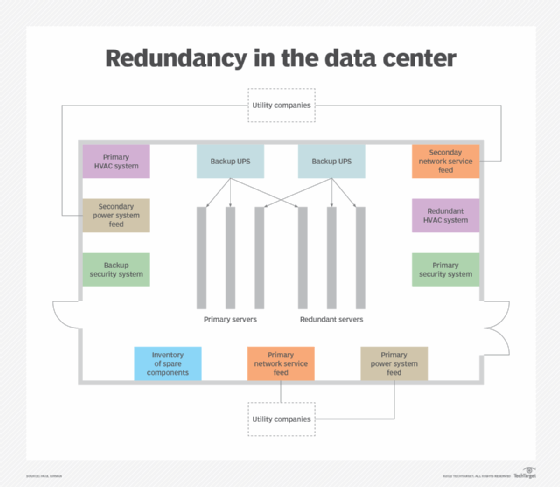If a Company Goes Bust Who Pays Redundancy? Lawful Insights for UK Personnel
If a Company Goes Bust Who Pays Redundancy? Lawful Insights for UK Personnel
Blog Article
Checking Out the Interaction In Between Company Redundancy and Business Adaptability for Future Growth
In the vibrant landscape of today's organization world, the complex partnership in between company redundancy and business flexibility emerges as an essential factor for continual development and success. Firms usually deal with the difficulty of striking a delicate equilibrium between keeping a level of redundancy to alleviate threats and fostering adaptability to react quickly to the ever-evolving market needs.
Value of Business Redundancy
Firm redundancy is an essential element that improves organizational durability and minimizes operational risks. By integrating redundancy measures within the business framework, companies can better withstand unforeseen disruptions and changes in the service environment. Redundancy acts as a critical buffer, permitting business to adapt and respond properly to unanticipated difficulties without jeopardizing important operations.
One key aspect of the importance of business redundancy is its function in guaranteeing connection during times of situation. When confronted with sudden changes or emergencies, repetitive systems, resources, or employees can action in to keep essential features and protect against prevalent interruptions. This connection not only safeguards the company's track record and consumer trust however also decreases financial losses and functional downtime.

Approaches for Business Flexibility

An additional important method is spending in innovation and framework that can sustain versatility and scalability. Applying electronic devices, automation, and data analytics can improve operations, improve effectiveness, and offer useful understandings for educated decision-making. Furthermore, producing versatile business frameworks that enable fast adjustments to market characteristics and client needs is important for remaining affordable in a swiftly developing atmosphere. By proactively recognizing potential disturbances and chances, organizations can proactively adjust and prosper in an ever-changing service go landscape.
Balancing Redundancy and Flexibility
Achieving an unified balance in between operational redundancy and business adaptability is extremely important in browsing the complexities of a dynamic business environment. Striking the right equilibrium between redundancy and adaptability is a fragile process that needs a deep understanding of the organization's goals, sector dynamics, and danger resistance.
To attain this equilibrium, firms require to conduct normal evaluations of their procedures to identify locations where redundancy is required for danger reduction and where versatility can drive innovation and growth. Implementing adaptable structures, promoting a society of constant knowing and improvement, and urging open interaction throughout all levels of the company are crucial methods to balance redundancy and adaptability efficiently. By aligning these 2 vital components, business can place themselves for sustainable development and success in an ever-changing company landscape.
Study on Adjustment Success
In analyzing circumstances of successful organizational adjustment, it becomes noticeable that the interaction between functional redundancy and versatility is a defining factor in shaping resilient companies. A DVD rental solution, Netflix demonstrated remarkable flexibility by transitioning into a streaming platform when digitalization disrupted the sector. These situation researches emphasize the relevance of operational redundancy coupled with organizational adaptability in cultivating long-term development and competition.
Structure Durability for Future Development
Structure durability for future growth calls for a calculated positioning of functional processes with market dynamics and arising patterns. Companies need to adjust to altering environments by fostering a society of adaptability, development, and continuous enhancement. Strength involves not only getting better from obstacles but additionally proactively planning for future challenges. One essential description facet of structure strength is purchasing robust danger monitoring approaches to mitigate possible disruptions. This includes scenario planning, diversifying supply chains, and creating contingency prepare for numerous backups (who pays redundancy money).
In addition, cultivating solid partnerships with stakeholders, such see this as customers, staff members, suppliers, and the community, is vital for maintaining and weathering unpredictabilities trust and assistance throughout rough times. Effective communication and transparency play an essential duty in structure strength, as they assist straighten expectations and help with partnership in browsing uncertainties.
Moreover, organizations need to focus on knowing and advancement efforts to upskill staff members and furnish them with the required devices to adjust to transforming circumstances. By spending in their labor force, companies can improve their adaptability and agility, inevitably reinforcing their resilience for lasting future growth.
Conclusion
In the vibrant landscape of today's organization world, the elaborate partnership between firm redundancy and organizational flexibility arises as a critical variable for continual growth and success. Firms frequently encounter the challenge of striking a fragile balance in between keeping a degree of redundancy to reduce threats and cultivating adaptability to react promptly to the ever-evolving market demands.To accomplish this balance, business need to carry out normal assessments of their operations to identify locations where redundancy is necessary for danger mitigation and where flexibility can drive development and development.In conclusion, the interplay in between company redundancy and business adaptability is critical for future growth. Building strength with a combination of redundancy and adaptability will certainly make sure that companies are prepared for the challenges of the future.
Report this page